First light
Is everything really so beautifully colourful? Here’s how deep sky objects such as clusters, nebulae and galaxies really look through an entry-level telescope.
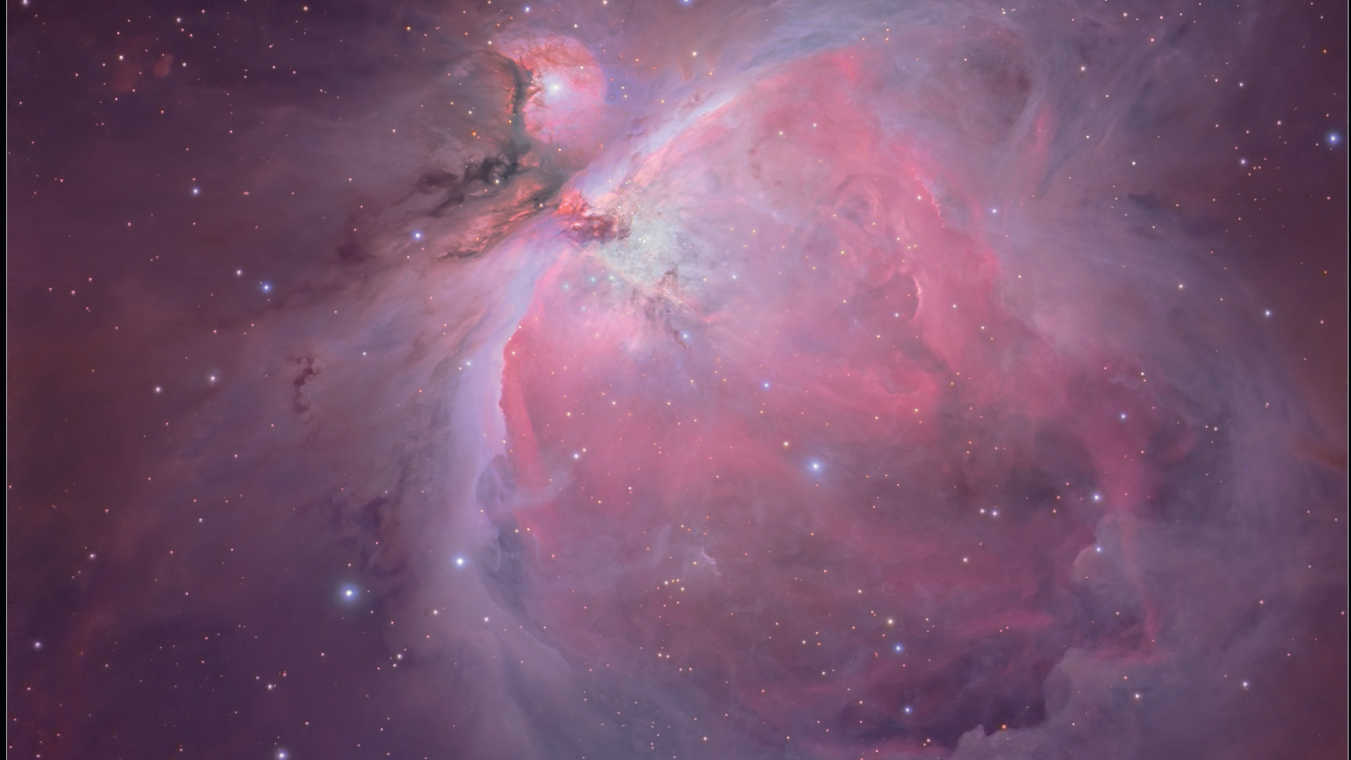 You will only ever see the Orion Nebula in brilliant colour in a photograph. Mario Weigand
You will only ever see the Orion Nebula in brilliant colour in a photograph. Mario WeigandWhat do deep sky objects look like through an entry-level telescope?
The sky is clear, your new telescope is set up and, with a little patience, you’ve even found your first object. But often this is followed by great disappointment: deep sky objects look completely different to the pictures you see in books and on the Internet when they’re viewed through a telescope. Long-exposure images of the Orion Nebula M 42, for example, show a huge, beautifully colourful nebula landscape. By contrast, when we look at it through a telescope, the nebula has no colour at all.
Stars as points of light
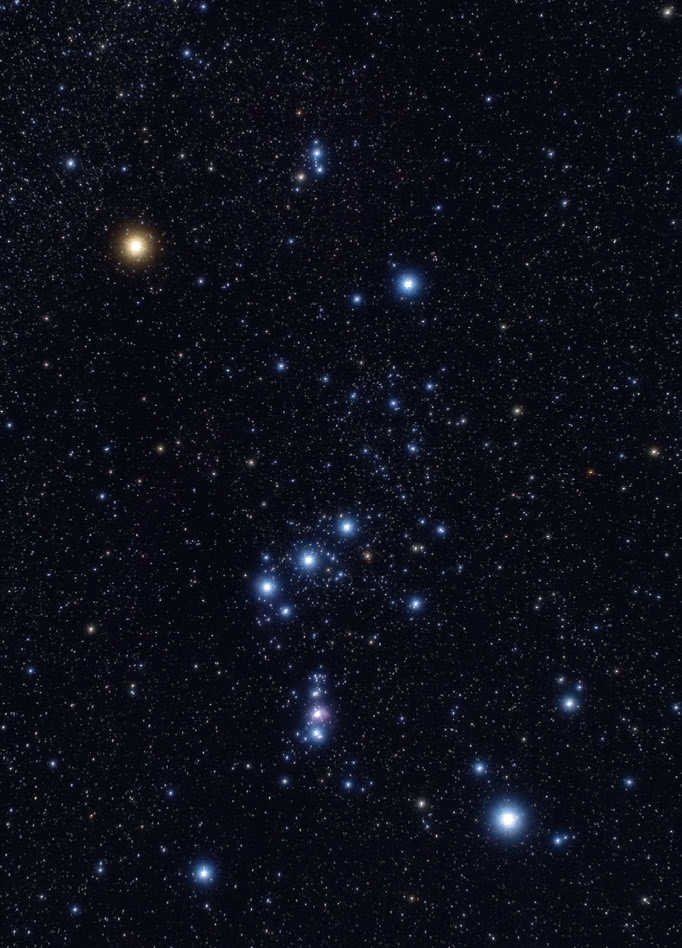 The constellation of Orion with Betelgeuse and Rigel. Peter Wienerroither / GSFC/Arizona State University
The constellation of Orion with Betelgeuse and Rigel. Peter Wienerroither / GSFC/Arizona State UniversityStars in the night sky appear as points of light. This remains the case even when viewed through an amateur telescope, since the stars are too far away to be seen as a round object. Even at high magnifications, they remain point-shaped. However, the number of visible stars increases when viewed through a telescope. And you can easily detect differences in the colours of the stars with a telescope. For example, some stars will seem to be blue, red or yellow, which is due to differences in their surface temperature. A nice example are the stars Betelgeuse and Rigel in the constellation of Orion. Betelgeuse, the star at Orion’s shoulder, is classified as a red supergiant. With a surface temperature of just under 3200°C, it glows reddish, which can even be seen with the naked eye. On the other hand, Rigel – or β Ori - the star at Orion’s foot, is bluish-white in colour with a significantly higher surface temperature of over 12.000°C.
Magnificent open clusters
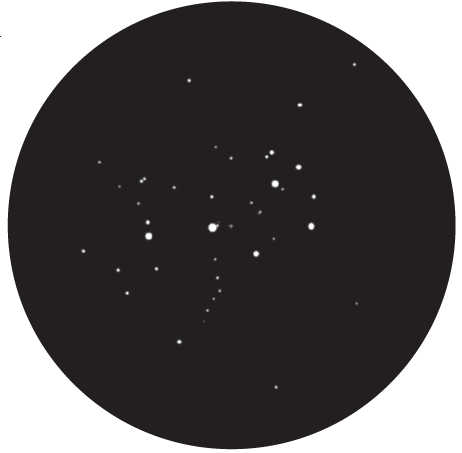 Illustration of the Pleiades M 45 in a telescope with a 60mm aperture, 20× magnification. L. Spix
Illustration of the Pleiades M 45 in a telescope with a 60mm aperture, 20× magnification. L. SpixOpen clusters are rewarding objects for the observer, as they are the most comparable to what you see in photographs. Many open clusters can be resolved into individual stars even with a small entry-level telescope, and appear as a collection of dozens of stars in a relatively small area. In winter, the Pleiades M 45 open cluster is a worthwhile destination. It can be found a short distance from the central part of the constellation of Taurus. Under a dark suburban sky, around six stars from the constellation can be seen with the naked eye, and the cluster can even be seen from the city. M 45 consists of over 1,000 mainly young and hot suns, which shine with a blue/white light. Looking through a small telescope, several bright stars can be seen in a pattern reminiscent of the Big Dipper, against a background of around 30 other fainter stars.
Huge globular clusters
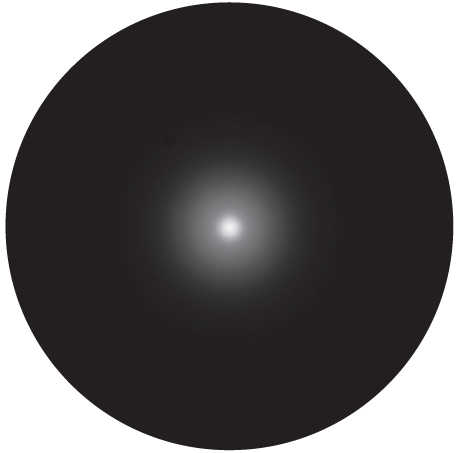 Illustration of the globular cluster M 15 in a telescope with a 60mm aperture, 100x magnification L. Spix
Illustration of the globular cluster M 15 in a telescope with a 60mm aperture, 100x magnification L. SpixIn photographs, globular clusters appear as magnificent groups of stars, often even the centre can be resolved into individual stars. Here, there is a significant difference between the results from photography and the view through an eyepiece. In small-aperture telescopes, globular clusters appear to be diffuse, nebulous objects with a bright centre, so your small entry-level telescope will not allow you to resolve the individual stars. Nevertheless, it’s still exciting to catch a glimpse of these oldest objects in the Milky Way. M 15 in the constellation Pegasus counts as one the most magnificent globular clusters in the northern night sky, which can be found to the west on early winter evenings. M 15 is probably the densest globular cluster in our galaxy. The bright core, in which thousands of stars crowd together, is particularly striking to observe.
Nebulae and galaxies
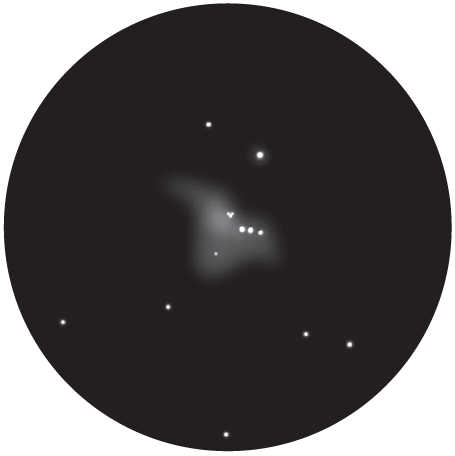 Illustration of the Orion nebula M 42 in a telescope with a 60mm aperture, 50x magnification. L. Spix
Illustration of the Orion nebula M 42 in a telescope with a 60mm aperture, 50x magnification. L. SpixNebulae and galaxies count among the most popular objects to observe. Here there is the greatest difference between observing these objects and photography. A camera's image sensor can capture colour data over the entire duration of the exposure. These colours, in principle real, are too faint to be perceived by the human eye. Through a telescope, nebulae and galaxies appear as pale and colourless structures in tones of grey. The Orion Nebula M 42 in the constellation of Orion is ideal for observing in winter. As the brightest galactic nebula, M 42 is visible even with the naked eye as part of Orion's sword. In the small telescope you can see a nebula covering an area about the size of the full Moon with the typical pulsations. Here, the observer is looking into the centre of a gas cloud 1,300 light years away, in which new stars are forming and are beginning to free themselves from the surrounding cocoon of dust.
Exciting observations
Even though many deep sky objects seem unspectacular at first glance, observing them with a telescope is still exciting. Instead of passively viewing ready-made images, you can discover objects thousands or even millions of light years away with your own eyes. The nature adventure that is astronomy is complemented by the knowledge that, as you gain experience, you bring to life what you see through your telescope.
Author: Lambert Spix / Licence: Oculum Verlag GmbH
